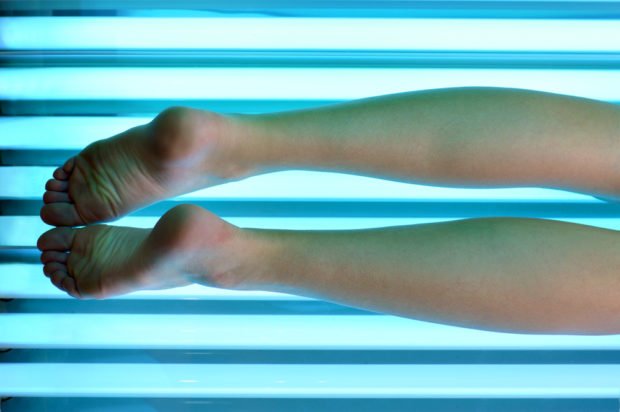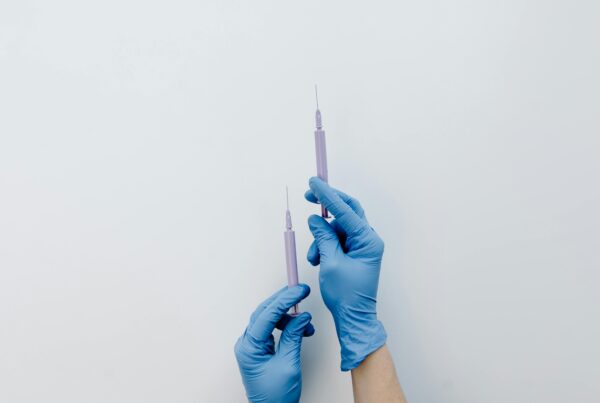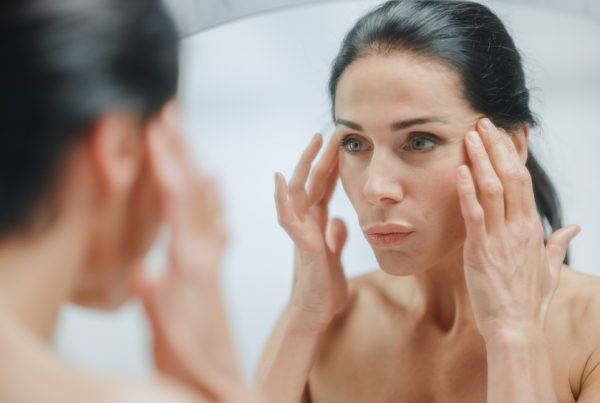Tanning is a process that has taken the beauty industry by storm over the years. In a practice that has been associated with glowing skin and a deeper shade, tanning is opted to improve one’s general appearance. However, this beauty practice may be doing more harm than good. In fact, the “glow” of a tan is considered the very opposite of healthy.
How Does Tanning Work?
Tanning takes place in the skin’s outermost layer, the epidermis (more specifically, the germinative layer, known as the “living” epidermis). Special cells, called melanocytes, produce melanin when exposed to ultraviolet rays.
Being responsible for the formation of pigment, melanin oxidizes, creating a protective barrier that prevents the ultraviolet rays from reaching more sensitive layers of the skin. This natural defense system results in the skin darkening to protect itself from high exposure to UV radiation.
What are Ultraviolet Rays?
Ultraviolet rays can simply be defined as invisible rays taking the form of non-ionizing radiation emitted by the sun, and artificial sources, including tanning beds, and acrylic nail UV lamps. These rays are classified into three primary types, namely Ultraviolet A (UVA), Ultraviolet B (UVB), and Ultraviolet C (UVC). You’ve probably seen UVA and UVB on your sunscreen packaging before, which is essential.
While these rays may help with the production of vitamin D, which allows the body to absorb calcium and assist bone development, they carry some severe health risks.
Unlike UVC, the ozone layer does not completely absorb these rays. This then allows them to penetrate deeper into the skin and potentially cause harm.
Health Risks of UV Rays from Tanning
Increased Risk of Melanoma
Being the most invasive type of skin cancer with the highest risk of death, Melanoma develops in melanocytes, which, as stated above, are responsible for melanin production. With fast growth rates and its ability to spread to any organ, melanoma has been linked to overexposure to sunlight and tanning.
A study observed that amongst 63 women diagnosed with melanoma before the age of 30, 97% of them used tanning beds. It has also been shown that early exposure to tanning beds can increase your chances of developing melanoma by up to 75%.
Can Cause Photoaging
UVA rays, distributed at a high rate with both sun tanning and tanning beds, are associated with photoaging. Being responsible for 90% of visible changes to the skin, photoaging is premature aging of the skin due to repeated UV ray exposure, with the rays causing damage to dermal connective tissue.
The visible consequences of photoaging include wrinkles, hyperpigmentation, loss of skin tone, dryness, and roughness of the skin.
Unlike the natural aging of your skin, photoaging causes DNA changes in your skin cells, which increases your risk of skin cancer. The effects of this occur on the most visible areas of your skin. These include your face, neck, arms, and the back of your hands.
Affects Collagen Production
Exposure to UV rays can lead to collagen breaking down at a faster rate in comparison to the normal aging rate. Collagen, known for reversing the signs of aging, has been shown to improve the moisture and elasticity of the skin, giving it a youthful, radiant look and feel.

dennnis/shutterstock
Since these rays penetrate the middle layer of your skin, known as the dermis, they can break down elastin fibers. This causes the skin to lose elasticity, ultimately leading to increased wrinkles and saggy skin.
Can You “Tan Safely?”
Dermatologist Jennifer Lucas, MD, has stated that “there is no such thing as a safe tan.”
While we all want to achieve glowing skin, tanning may not be the way to go. However, the beauty industry realizing this has led to the development of a potentially healthier option to achieve a tanned look without UV Ray exposure: spray tanning.
What is Spray Tanning?
Spray tanning, which is a form of self-tanning, involves a fine mist being sprayed onto your body. The primary ingredient in this mist is Dihydroxyacetone (DHA), which just so happens to be the only substance the FDA has approved for skin tanning and a glycerin derivative.
DHA reacts with amino acids found on the surface layer of the skin, which contains the protein keratin. This reaction leads to the formation of melanoidin’s, producing the sun-kissed look many are hunting for.
How Safe Is Spray Tanning?
Like almost everything on the market, spray tans are not 100% risk-free. In a study conducted, it was discovered that DHA can cause DNA damage and cell stress. As DNA damage can lead to cancer, there has been concern about its health implications.
Although the FDA approved it, it was only approved for external use. This tells us that inhaling it could lead to potential health risks. While some researchers have expressed concern that DHA inhalation increases the risk of asthma, lung cancer, and chronic obstructive pulmonary disease, these are still being studied.
The most important thing here is ensuring that you use these products properly and avoid inhalation.
To Spray-Tan, or Not To Spray-Tan?
Self-tanning allows you to achieve flawless-looking skin by enhancing its appearance. It hides cellulite and blemishes and helps you look more toned. The best part is that it does all this without the damaging effects that come with UV rays.
Not only is this safe, but convenient too, as you can get a long-lasting tan in minutes compared to the hours you would have to spend in the sun or on a tanning bed. Beauty is skin deep, and this ensures that your skin looks good on the outside without causing any damage to it, making it an ideal alternative.
MAIN IMAGE CREDIT|: Denovyi/Shutterstock
References
- O’Sullivan, D.E., Brenner, D.R., Demers, P.A., Villeneuve, P.J., Friedenreich, C.M., King, W.D. and ComPARe Study Group, 2019. Indoor tanning and skin cancer in Canada: A meta-analysis and attributable burden estimation. Cancer epidemiology, 59, pp.1-7.O’Sullivan, D.E., Brenner, D.R., Demers, P.A., Villeneuve, P.J., Friedenreich, C.M., King, W.D. and ComPARe Study Group, 2019. Indoor tanning and skin cancer in Canada: A meta-analysis and attributable burden estimation. Cancer epidemiology, 59, pp.1-7.
- Salminen, A., Kaarniranta, K. and Kauppinen, A., 2022. Photoaging: UV radiation-induced inflammation and immunosuppression accelerate the aging process in the skin. Inflammation Research, 71(7-8), pp.817-831.
- Holick, M.F., 2020. Sunlight, UV radiation, vitamin D, and skin cancer: how much sunlight do we need?. Sunlight, Vitamin D and Skin Cancer, pp.19-36.





![women [longevity live]](https://longevitylive.com/wp-content/uploads/2020/01/photo-of-women-walking-down-the-street-1116984-100x100.jpg)










